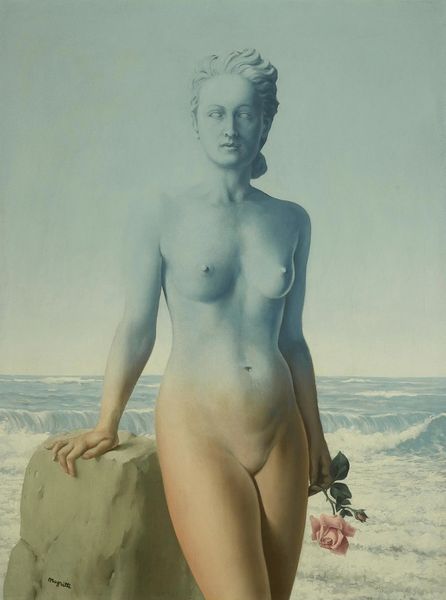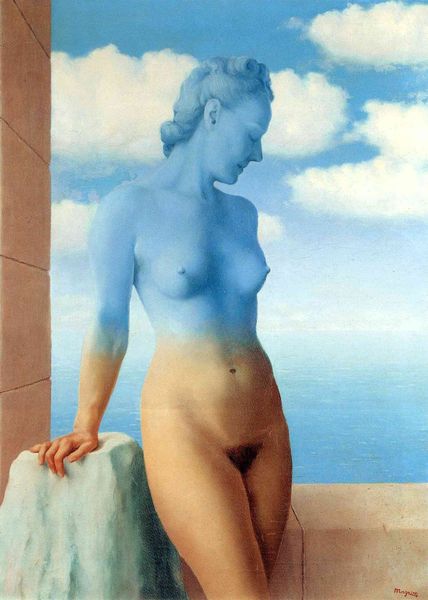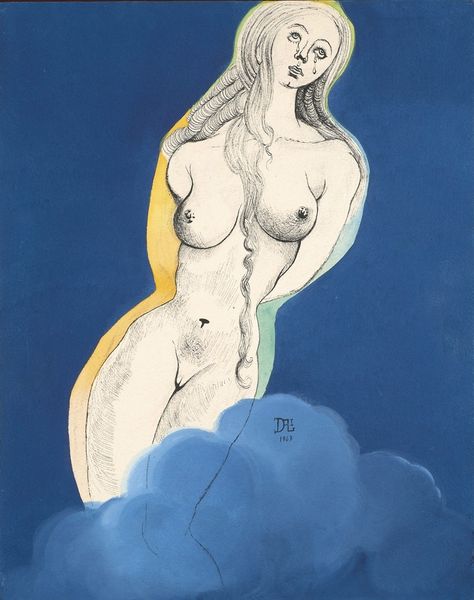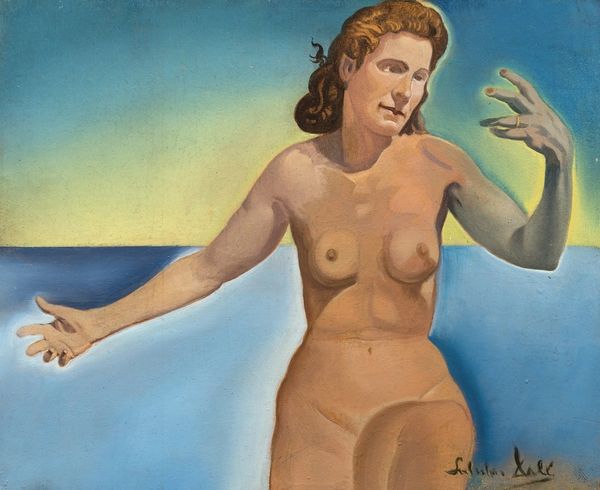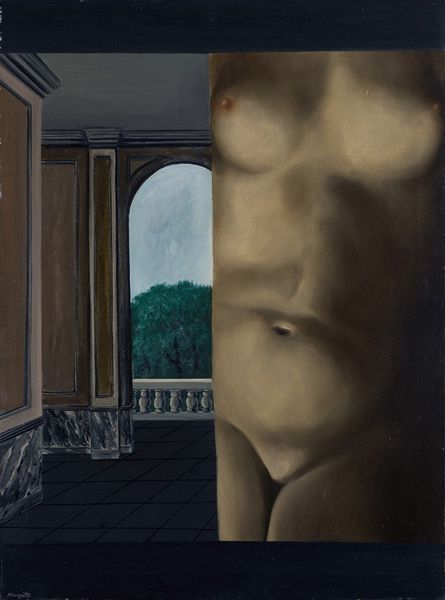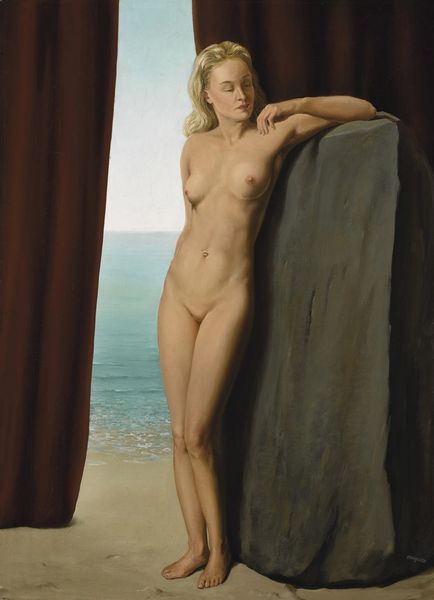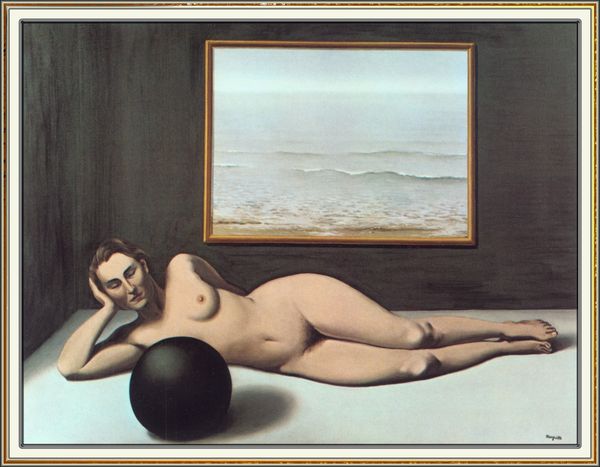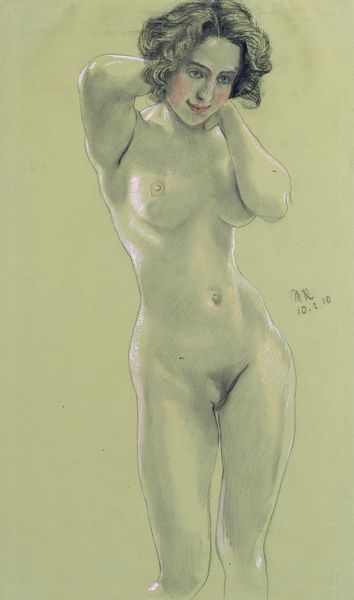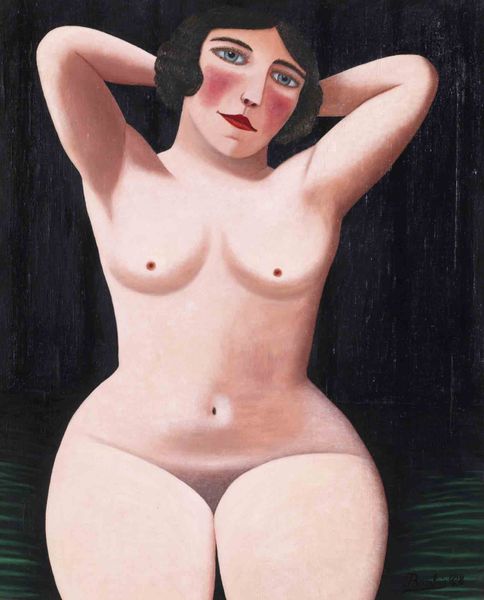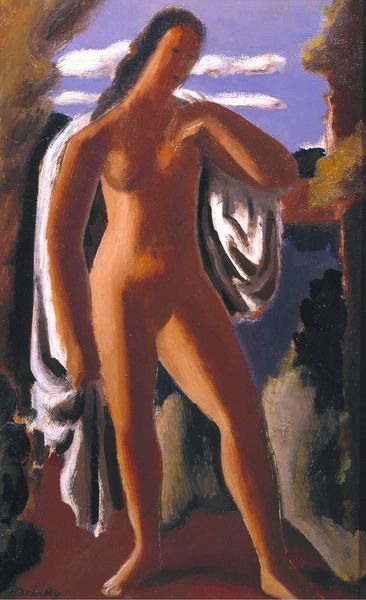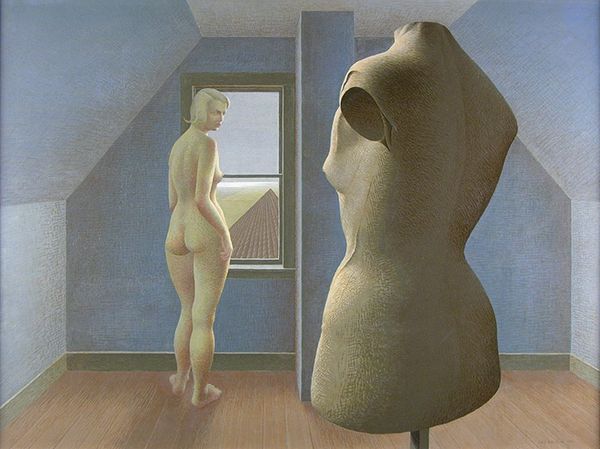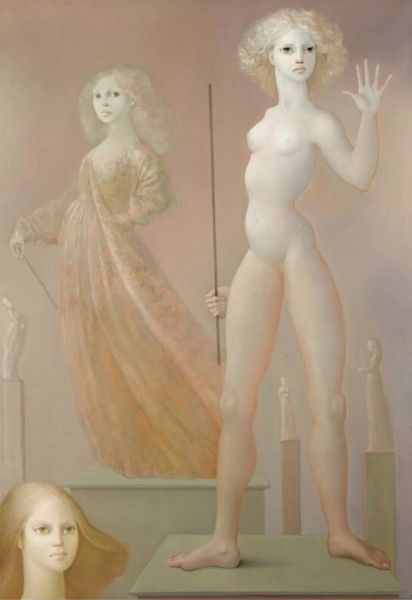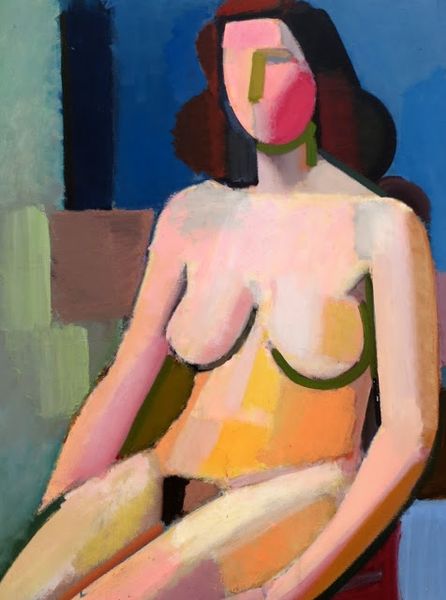
oil-paint
#
allegory
#
oil-paint
#
landscape
#
figuration
#
oil painting
#
history-painting
#
nude
#
surrealism
#
realism
Copyright: Modern Artists: Artvee
Editor: So, this is René Magritte’s *Le miroir universel* from 1939. It's an oil painting. The woman in the piece, juxtaposed against the stark wall, feels very monumental and also kind of eerie. How do you interpret this work, especially given its title and historical context? Curator: The title “The Universal Mirror” is quite telling. Consider the year it was painted: 1939. The looming Second World War created a sense of anxiety and uncertainty. How does this resonate when you see the female figure bisected tonally and formally? Editor: Well, the color change is what really throws me – blue and statue-like on top, versus very realistically fleshed-out at the bottom. Is it about contrasting ideals versus reality? Curator: Precisely. Magritte was deeply engaged with philosophy and explored ways to disrupt perception. Think about what “universal” truly means in this period, in terms of public space, museums, or the body – what rules were in place? The transition from statue to flesh perhaps embodies this conflict. It poses a fascinating socio-political question of appearance versus authenticity, especially relevant at a time when ideologies were clashing. Notice also how the sea almost laps at the neoclassical panel. Editor: That makes sense. The architectural fragment introduces a strong element of constraint. Almost like two incompatible worlds forced into one frame. But how does that interact with our modern sensibility of art? Curator: What do you see in our current institutional framework, like our museums and galleries, for example, what are your thoughts about where we show art and for whom? Has that shifted? Editor: I think that’s shifted a lot now that there are more forms of modern artistic expression through performance and digitally – the very structures of society around art have become a lot more democratic, perhaps, so our reaction to the surrealist context is lessened now. Curator: Precisely, thinking of it as more about individual agency, yes. That is very interesting! We often forget how much even visual representation and museum practices reflect and reinforce the values of their time. Editor: I definitely have a deeper appreciation for the power dynamics within this piece now!
Comments
No comments
Be the first to comment and join the conversation on the ultimate creative platform.
